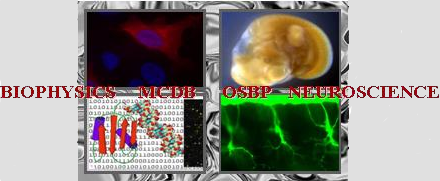Talk abstracts
Talk on Tuesday 04:30-04:45pm submitted by Jessica Nunes
To catch a killer: Delineating the mechanistic role of Siglec-6, a novel glycoprotein target, for the treatment of Chronic Lymphocytic Leukemia
Jessica Nunes (MCDB, The Ohio State University), Ann Ventura, Kevan Zapolnik (Internal Medicine, The Ohio State University), Liwen Zhang (Campus Chemical Instrument Center , The Ohio State University), John Byrd (Internal Medicine, University of Cincinnati), Christoph Rader (Department of Immunology and Microbiology, Scripps Research), Natarajan Muthusamy (Internal Medicine, The Ohio State University)
Abstract:
Sialic acid-binding immunoglobulin-like lectins (Siglec) are a group of glycoproteins that regulate innate and adaptive immune function via glycan recognition. Siglec-6 and its ligand, sialyl Tn (sTn), are both overexpressed in patients with chronic lymphocytic leukemia (CLL). Here, we show for the first time the functional relevance of Siglec-6 and sTn in cell adhesion and migration in CLL. Siglec-6+ primary B-CLL cells have significantly enhanced adhesion and migration towards sTn+ bone marrow stromal cells from CLL patients. A Siglec-6 targeted antibody inhibited homing of Siglec-6+ MEC1 cells (a CLL cell line) and B-CLL cells to the spleen and bone marrow in NSG mice. Mass spectrometry analysis in MEC1 cells revealed interaction of Siglec-6 with DOCK8, a guanine nucleotide exchange factor. Stimulation of Siglec-6+ MEC1 cells with sTn resulted in Cdc42 activation, WASP recruitment and enhanced actin polymerization, which were compromised in Siglec-6 or DOCK8 knock-out (KO) MEC1 cells. Additionally, cell fractionation experiments revealed that Siglec-6+ MEC1 cells and B-CLL cells had higher levels of DOCK8 at the cell membrane when compared to MEC1 Siglec-6 KO cells and normal donor B cells respectively, indicating that Siglec-6 may be responsible for tethering DOCK8 to the cell membrane and is important for promoting actin polymerization at the leading cell edge. To study the therapeutic potential of Siglec-6, we generated a human Siglec-6 transgenic mouse model and crossed it with the well-known TCL1 CLL mouse model to obtain Siglec-6 x TCL1 mice which develop Siglec-6+ leukemia. At 9 months, Siglec-6 x TCL1 mice have a higher percentage of circulating leukemic cells when compared to TCL1 mice (n=4), suggesting that Siglec-6 may accelerate disease progression in CLL. Ex vivo experiments with a Siglec-6/CD3 targeted bispecific antibody showed specific killing of Siglec-6+ leukemic B cells. In summary, our studies have identified a novel role for Siglec-6 in promoting DOCK8 dependent CLL cell migration and opens up new therapeutic avenues to eliminate Siglec-6+ malignant B cells. Ongoing studies are focused on evaluating the in-vivo efficacy of Siglec-6/CD3 targeted bispecific antibody as well as identifying the leukemogenic role of Siglec-6 in CLL.
References:
Till, K. J., Lin, K., Zuzel, M. & Cawley, J. C. The chemokine receptor CCR7 and alpha4 integrin are important for migration of chronic lymphocytic leukemia cells into lymph nodes. Blood 99, 2977-2984, doi:10.1182/blood.v99.8.2977 (2002).
2 Burger, J. A., Burger, M. & Kipps, T. J. Chronic lymphocytic leukemia B cells express functional CXCR4 chemokine receptors that mediate spontaneous migration beneath bone marrow stromal cells. Blood 94, 3658-3667 (1999).
3 Hasan, M. K., Rassenti, L., Widhopf, G. F., Yu, J. & Kipps, T. J. Wnt5a causes ROR1 to complex and activate cortactin to enhance migration of chronic lymphocytic leukemia cells. Leukemia 33, 653-661, doi:10.1038/s41375-018-0306-7 (2019).
4 Choi, M. Y. et al. Phase I Trial: Cirmtuzumab Inhibits ROR1 Signaling and Stemness Signatures in Patients with Chronic Lymphocytic Leukemia. Cell Stem Cell 22, 951-959.e953, doi:10.1016/j.stem.2018.05.018 (2018).
Keywords: Siglec-6, Chronic Lymphocytic Leukemia, Bispecific antibody
